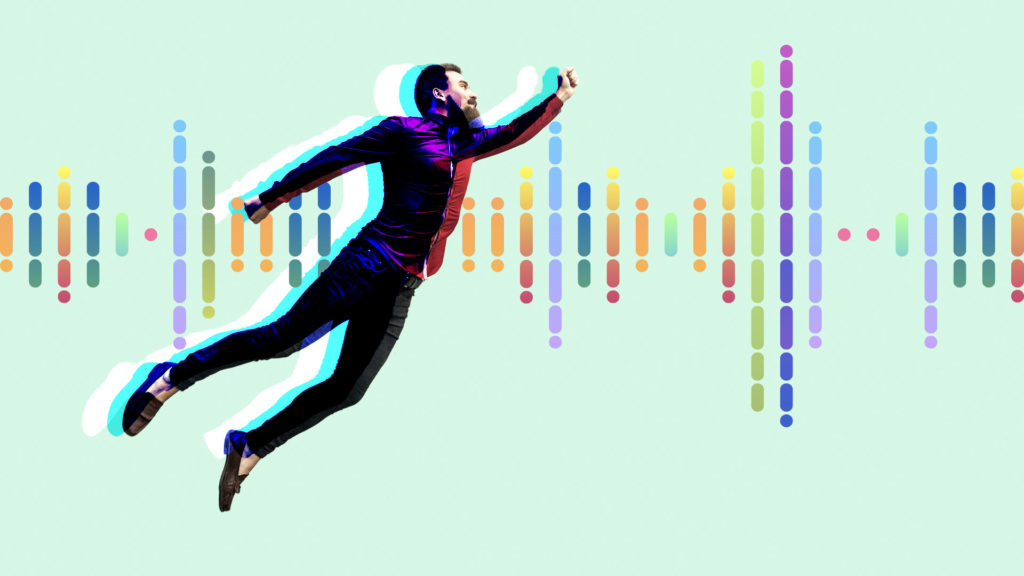
Some of the links on this page may link to our affiliates. Learn more about our ad policies.
Seniors Surviving the Summer Heat
Tips to Help Survive The Increasingly Dangerous Summer Heat

The United States is expecting several heat waves this summer. From Arizona to Minnesota, summer heat waves are starting earlier, lasting longer, and reaching further than ever before. Just take a look at the NCEI temperature map comparisons, one map is showing the average temperatures in May 2013. The other is the same map showing average temps in May 2023. You can easily see the increase in average temperatures in the United Stated is just ten years.
Such a rise in average temperatures is leading to an increased frequency and severity of heat waves around the world. These extreme heat events pose significant health risks to the general population, but the risks are especially pronounced for older adults. While heat during the day can be dangerous, what adds to this danger is that nighttime temperatures are also remaining high. So there’s no reprieve from the heat and no opportunity for your body to rest and recover.
Seniors are particularly vulnerable to the effects of extreme heat due to a combination of physiological, social, and environmental factors. As we age, our bodies become less efficient at regulating temperature. The ability to perceive changes in body temperature diminishes, meaning seniors may not recognize when they are overheating. This physiological reality, combined with the fact that many older adults have chronic health conditions or take medications that impair the body’s ability to react to heat, increases their risk for heat-related illnesses like heat exhaustion and heat stroke.
In addition, seniors who live alone or lack access to air conditioning or transportation are at an even higher risk of heat-related health issues. These factors underline the necessity of implementing strategies to protect seniors from extreme heat and the importance of recognizing rising temperatures as a significant threat to their health and well-being.
You may already have one of the most powerful tools to help prevent a heat-related medical issue in your pocket. Many fitness trackers today have EKG monitors and emergency alerts to help you monitor your health, not just your fitness during activity. Let’s take a look at some of the risks, and tools to help.
Understanding the Unique Vulnerability of Seniors to Heat
As we age, our bodies undergo a variety of physiological changes that can make us more susceptible to the effects of extreme heat. One key factor is that our ability to sense and respond to changes in temperature decreases. This decrease in thermoregulation can make it difficult for seniors to realize when they are becoming overheated, putting them at risk for heat-related illnesses.
Moreover, the body’s ability to sweat, a critical heat-regulating response, may also decrease with age. This could lead to a dangerous increase in body temperature during hot weather. The risk is compounded for seniors who are overweight, as excess body fat can act as insulation, trapping heat in the body and making it harder to cool down.
Chronic health conditions common among seniors, such as heart disease, kidney disease, and diabetes, can further compromise the body’s ability to regulate temperature. For instance, heart disease can affect the body’s ability to circulate blood effectively, thereby limiting heat dispersion. Similarly, diabetes can damage sweat glands over time, reducing the body’s ability to sweat and cool itself.
Medications commonly taken by seniors can also impact the body’s response to heat. Diuretics, for instance, can increase the risk of dehydration, while beta-blockers can reduce the ability of the heart and lungs to adapt to stresses, including heat.
Health Risks for Seniors in Extreme Heat
Dehydration is a significant risk for seniors in extreme heat. As we age, our sense of thirst becomes less acute, which means that seniors might not drink enough fluids to compensate for the increased loss of water through sweating during hot weather. Dehydration can be severe and lead to life-threatening conditions such as heat exhaustion and heat stroke.
Heat exhaustion is a heat-related illness that can occur after exposure to high temperatures and inadequate or unbalanced replacement of fluids. Signs of heat exhaustion include heavy sweating, weakness, cold, pale, and clammy skin, a fast and weak pulse, and fainting. If left untreated, heat exhaustion can lead to heat stroke.
Heat stroke is the most serious heat-related illness and occurs when the body becomes unable to control its temperature. The body’s temperature rises rapidly, and the sweating mechanism fails, which can cause the body temperature to rise to 106°F or higher within 10 to 15 minutes. Heat stroke can cause death or permanent disability if not treated immediately.
In addition to these specific heat-related illnesses, extreme heat can also exacerbate existing medical conditions common among seniors. For instance, it can increase heart-related issues due to added stress on the cardiovascular system. Similarly, those with respiratory diseases might find it harder to breathe in hot and humid conditions. For those with diabetes, heat can affect insulin sensitivity and cause blood sugar levels to fluctuate.
Recognizing the unique vulnerability of seniors to heat, it is imperative to identify and implement appropriate measures to protect them during periods of extreme heat. These measures could range from individual actions such as staying well-hydrated and avoiding peak heat periods to broader community support mechanisms like opening cooling centers and regularly checking in on seniors during heatwaves.
Role of Fitness Trackers in Monitoring Seniors’ Health During Heatwaves
Fitness trackers and smartwatches, like the Apple Watch, Fitbit, and Whoop, offer an array of features that can be instrumental in monitoring seniors’ health during a heatwave. These devices have evolved significantly over the years and now encompass a variety of health-tracking functionalities, not just basic fitness tracking. Here’s how these devices can be used:
Heart Rate Monitoring: The Apple Watch, Fitbit, and Samsung Galaxy watch all have have EKG monitors built-in. They continually monitor heart rate, providing real-time data that can help users understand their bodies better and identify any unusual spikes in heart rate. During a heatwave, an elevated heart rate could be a sign of heat stress or heatstroke, allowing seniors or their caregivers to take quick action.
Body Temperature Tracking: Some fitness trackers, like the latest models of the Fitbit, have integrated temperature sensors. This feature can help detect increases in body temperature, which can be a tell-tale sign of heat-related illnesses. While not all fitness trackers have this feature yet, those that do can provide vital information to seniors during heat waves.
Health Warnings: Advanced fitness trackers can analyze the collected health data and send alerts when they detect potential health issues. For example, the Apple Watch can send notifications for high heart rate, low heart rate, or irregular heart rhythms, which could be signs of a serious medical condition.
Emergency SOS and Fall Detection: Apple Watch 8 has a feature that allows users to quickly call for help if they need it. If the watch detects a hard fall, it automatically sends an alert to the user. If the user doesn’t respond within a certain timeframe, the watch can automatically call emergency services and share the user’s location. This feature can be a lifeline in situations where a senior is alone and unable to reach out for help themselves.
Connectivity and Sharing Data with Loved Ones and Healthcare Providers: Most fitness trackers allow data sharing with family members or caregivers. This means that loved ones can keep an eye on a senior’s health data, even from a distance. Some fitness trackers also enable data sharing with healthcare providers, allowing for remote patient monitoring and timely intervention if necessary.
Hydration Reminders: While not a standard feature, some fitness trackers and accompanying apps offer the ability to set hydration reminders. This can be particularly beneficial during a heatwave when staying adequately hydrated is critical.
Community Resources and Support for Seniors in Heatwaves
Communities play a critical role in supporting seniors during periods of extreme heat. This support can come from local government initiatives as well as from family, friends, and neighbors.
Cooling Centers: These are air-conditioned public spaces where individuals can go to cool down during extremely hot weather. They are often set up in community centers, libraries, or schools. Local governments may extend the hours of operation for these spaces during heatwaves to provide maximum accessibility for seniors.
Home Visit Programs: Some local health departments or social service agencies offer home visit programs during heatwaves to check on seniors, particularly those who live alone. These programs help ensure that seniors are safe and well, and that they have access to cool environments and adequate hydration.
Transportation Services to Safe Places: Not all seniors have the means to reach cooling centers or other safe locations during extreme heat. Some local governments offer transportation services for seniors during heatwaves, ensuring they can reach cooler locations when needed.
Role of Family, Friends, and Neighbors in Helping Seniors Cope with Heat
Regular Check-Ins: One of the simplest yet most effective ways to help seniors during a heatwave is regular check-ins. This can involve calling or visiting seniors to ensure they are doing okay and have everything they need. Regular check-ins can also help spot any signs of heat-related illnesses early.
Assistance with Home Modifications: Helping seniors to heat-proof their homes can significantly help them cope with the heat. This can involve installing air conditioning units, applying heat-reflective and insulating materials, setting up proper ventilation systems, or hanging light-colored or reflective window treatments.
Providing Transportation to Cool Places when Needed: If a senior does not have access to transportation, family, friends, and neighbors can provide rides to cooling centers, shopping malls, or other air-conditioned public spaces.
In times of extreme heat, it takes collective efforts at multiple levels to ensure the safety and well-being of seniors. These resources and support mechanisms, both at the community level and from close connections, can be life-saving for seniors during heat waves.
Content on this site is for reference and information purposes only. Do not rely solely on this content, as it is not a substitute for advice from a licensed healthcare professional or personal trainer. Aging.com assumes no liability for inaccuracies. Consult with your doctor before beginning any new exercise program.





